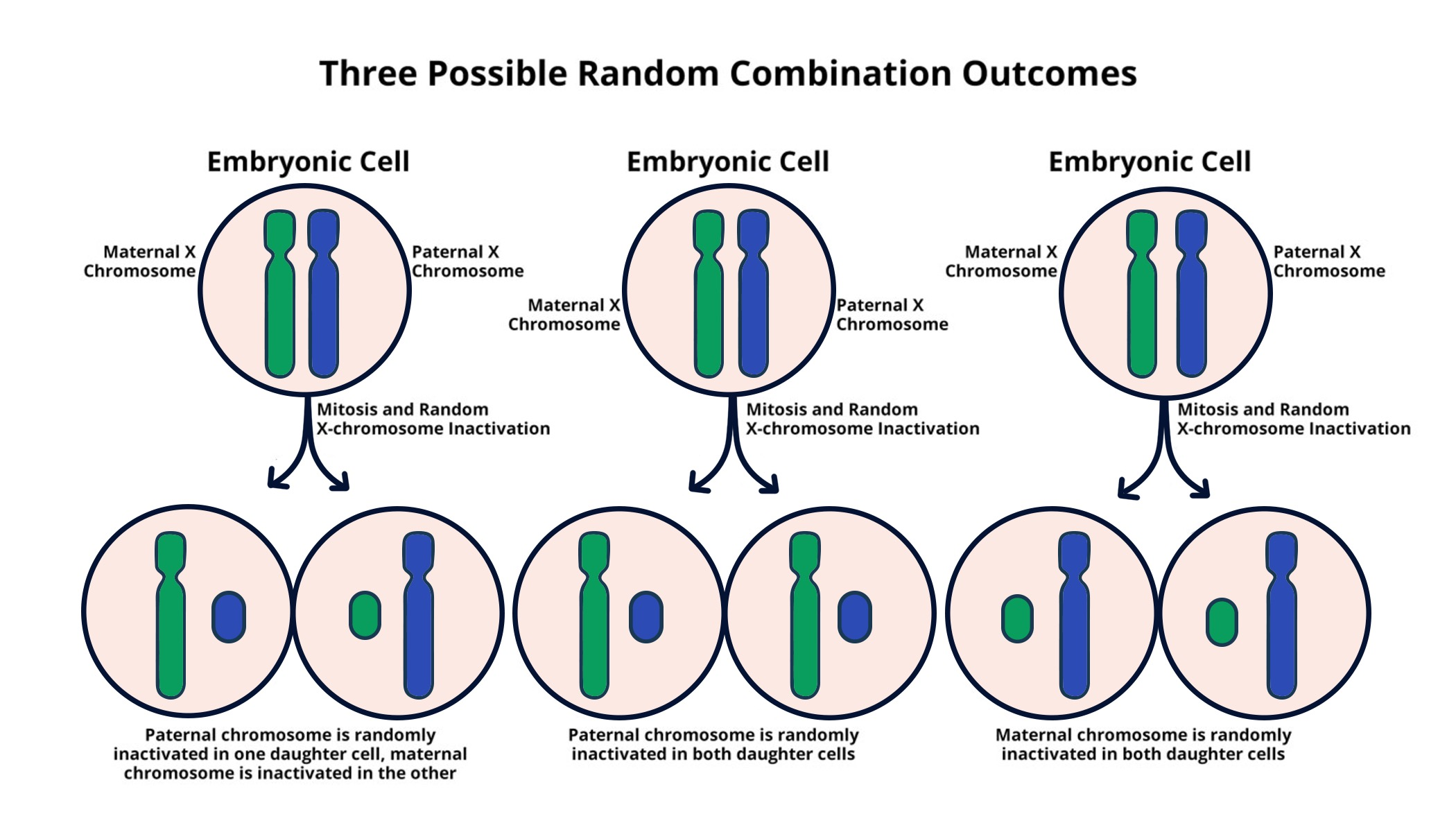X chromosome inactivation is a fascinating biological process that plays a crucial role in understanding genetic diseases linked to the X chromosome. This phenomenon occurs in females who possess two X chromosomes, leading to the silencing of one copy to prevent an excess of gene expression. The recent research conducted by Jeannie Lee’s lab sheds light on the mechanisms behind this chromosomal silencing, particularly the role of the Xist RNA molecule. By exploring how this mechanism operates, scientists may find new pathways to develop therapies for conditions like Fragile X Syndrome and Rett Syndrome. These advancements not only enhance our comprehension of X-related genetic disorders but also open doors to potential treatments that could revolutionize care for affected individuals.
The intricacies of X chromosome inactivation represent a groundbreaking field of study in genetic research, often referred to as the silencing of the inactive X (Xi). This process is essential for maintaining balance between gene expression in males and females, particularly in the context of chromosomal abnormalities that lead to various genetic disorders. As researchers delve into the role of the Xist RNA and the gelatinous matrix that encapsulates chromosomes, they are uncovering significant insights that may contribute to therapeutic interventions for disorders such as Fragile X and Rett Syndrome. Understanding the delicate interplay involved in this genetic balancing act could lay the groundwork for innovative treatment strategies aimed at unblocking inactivated genes, highlighting the potential for these discoveries to change the landscape of genetic disease management.
Understanding X Chromosome Inactivation
X chromosome inactivation (XCI) is a crucial biological process that occurs in females, where one of the two copies of the X chromosome is silenced to prevent an overexpression of X-linked genes. This phenomenon is vital for dosage compensation, ensuring that both males and females have similar levels of gene expression from the X chromosome. The identity of the silenced X is random in each of the female somatic cells, which leads to a mosaic pattern of gene expression across different tissues, significantly impacting the biology of many genetic diseases.
At the heart of X chromosome inactivation lies the Xist RNA molecule, which plays an essential role in initiating the silencing process. When Xist is expressed, it coats the X chromosome and alters the chromatin landscape, facilitating the recruitment of repressive factors. This method of chromosomal silencing is not just a mere academic curiosity; it holds the potential to unlock therapeutic avenues for conditions primarily linked to the X chromosome, such as Fragile X Syndrome and Rett Syndrome.
Frequently Asked Questions
What is X chromosome inactivation and why is it important in genetic diseases?
X chromosome inactivation is a biological process where one of the two X chromosomes in female cells is silenced to ensure that gene dosage remains balanced with males, who have only one X chromosome. This process is crucial for preventing overexpression of X-linked genes and is particularly significant in the context of genetic diseases, such as Fragile X Syndrome and Rett Syndrome, where mutations on the X chromosome can lead to serious developmental disorders.
How does the Xist RNA molecule play a role in X chromosome inactivation?
The Xist RNA molecule is essential for X chromosome inactivation as it coats the inactive X chromosome and alters the surrounding chromosomal environment—often described as ‘Jell-O.’ Xist interacts with this gelatinous material, promoting the silencing process that renders the X chromosome inactive, thereby preventing the expression of genes that may be mutated.
What potential therapies are being developed for Fragile X Syndrome linked to X chromosome inactivation?
Researchers, including Jeannie Lee’s lab, are exploring therapies that can unsilence the inactivated X chromosome to restore function to healthy genes that may be mutated, particularly in cases of Fragile X Syndrome. These therapies aim to allow access to the healthy version of the gene that is trapped in the silenced chromosome, which could lead to significant improvements for those affected.
How does X chromosome inactivation affect males compared to females with genetic diseases?
While males have only one X chromosome and do not undergo X chromosome inactivation, the processes of chromosomal silencing can still apply to individual genes on their single X chromosome if they carry mutations, such as those seen in Fragile X Syndrome. As a result, understanding X chromosome inactivation can inform therapies that might also benefit males with certain X-linked genetic diseases.
What are the implications of ongoing research on X chromosome inactivation for treating genetic disorders?
Ongoing research into X chromosome inactivation is uncovering potential therapies to unsilence inactive X chromosomes, which holds promise for treating genetic disorders linked to the X chromosome, such as Rett Syndrome and Fragile X Syndrome. This research aims to optimize gene accessibility and restore functionality to mutated genes while minimizing side effects, marking a possible breakthrough in genetic disease treatment.
Can X chromosome inactivation be reversed, and what does this mean for genetic therapies?
Recent studies indicate that X chromosome inactivation can potentially be reversed, providing a pathway for genetic therapies that aim to restore the function of mutated genes. This breakthrough suggests that individuals with genetic diseases like Fragile X Syndrome could benefit from treatments that reactivate the silenced X chromosome, allowing healthy gene expression and alleviating disease symptoms.
| Key Point | Description |
|---|---|
| X Chromosome Challenge | Females have two X chromosomes, but only one is active due to X chromosome inactivation. |
| Role of Xist | Xist RNA changes the properties of chromosomal ‘Jell-O,’ leading to the silencing of the inactivated X chromosome. |
| Potential Therapies | Research aims to unsilence inactivated X-linked genes, with potential treatments for Fragile X and Rett syndromes. |
| Clinical Trials | Future studies will focus on optimizing safe approaches for clinical use in genetic disorders. |
| Mysteries of Inactivation | Though the mechanism is understood, questions remain about how mutations are selectively addressed without affecting healthy genes. |
Summary
X chromosome inactivation is a crucial biological process that allows females to manage the effects of having two copies of the X chromosome. Recent research led by Jeannie T. Lee sheds light on the mechanisms involved in this inactivation, particularly through the role of the Xist RNA molecule. As scientists work toward developing therapies for genetic conditions linked to the X chromosome, such as Fragile X and Rett syndromes, the potential for treating these disorders through the unsilencing of mutated genes becomes increasingly tangible. This ongoing research not only highlights the complexities of gene regulation but also opens new avenues for clinical advancements in genetic medicine.



